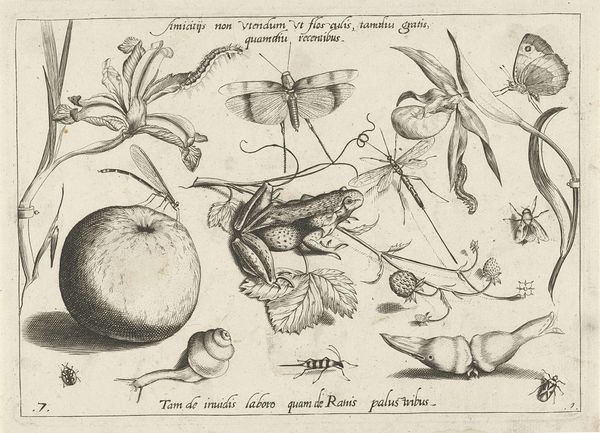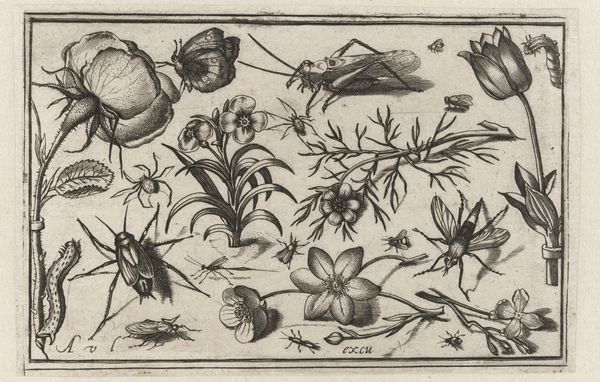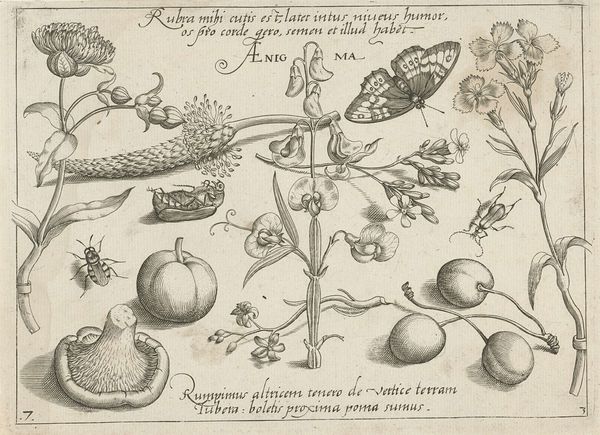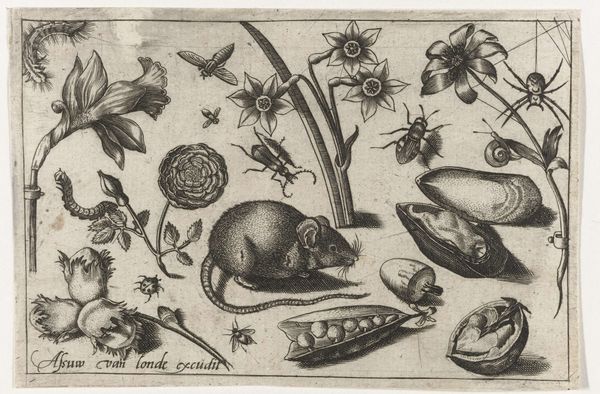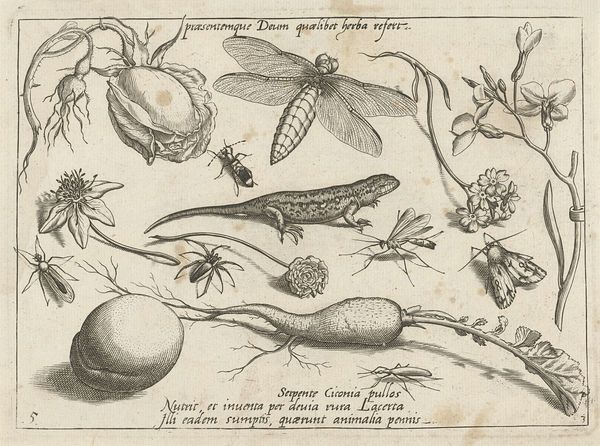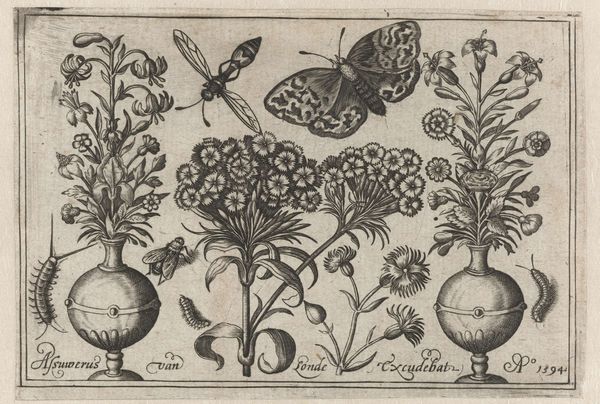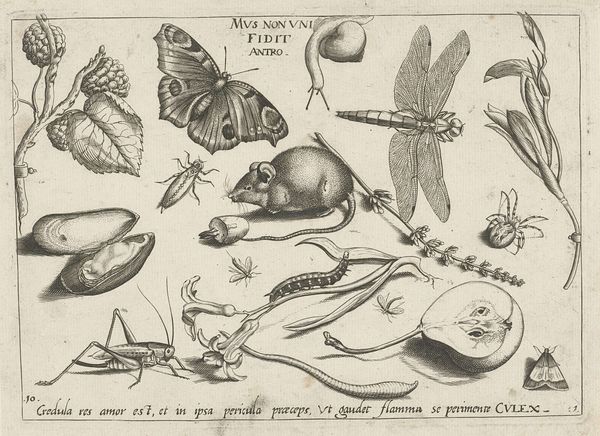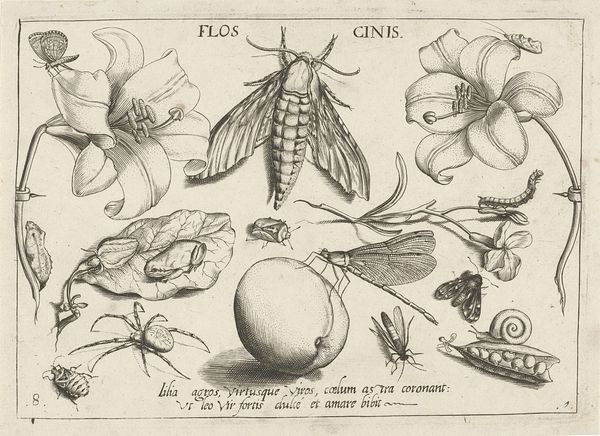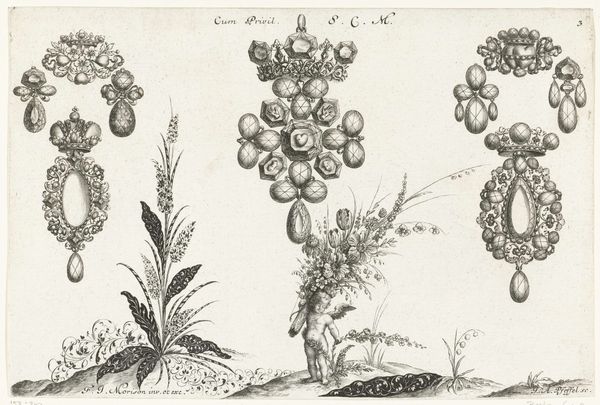
print, engraving
#
pen drawing
# print
#
engraving
#
realism
Dimensions: height 155 mm, width 216 mm
Copyright: Rijks Museum: Open Domain
Curator: This image is an engraving titled "Dieren, planten en vruchten rond een slak," or "Animals, plants and fruits around a slug," and it's a fascinating piece dating somewhere between 1592 and 1726. It's attributed to Jacob Hoefnagel. Editor: A slug, eh? My first thought: a rather…mundane centerpiece. It gives the piece a curiously grounded, almost unsettling feel. The fruits look so meticulously rendered, practically bursting with flavour, while the slug sits there, unapologetically slug-like. The artist seems to have wanted us to compare and contrast the beauty with the more bizarre elements of the world. Curator: Absolutely. Hoefnagel’s engravings were, at times, about meticulously cataloging the natural world. It feels like the slug represents the earthly, creeping element amidst a cornucopia. What strikes me is the inclusion of the latin text - Ipsa dies aperit: conficit ipsa dies- which translates to: the day itself opens: the day itself completes. It suggests the ephemerality of existence - what do you make of the arrangement? Editor: Ah, that is an excellent point, it makes you feel very uneasy. And this engraving’s placement of these elements creates a peculiar microcosm: there are other little beasts here: caterpillars, spiders, flies, even. All of the elements seem to border each other carefully, yet all contribute to that fleeting beauty we take from it. The composition creates tension between detail and death! Curator: Precisely. Death is an interesting focal point when considering a naturalist. Given these things surrounding that massive, dominant, slug! These things tell a little narrative when taken together. Editor: In this image it feels inevitable, too, but a certain stillness has it lingering. These images remind us of the circle of life and death. The slug is more of a memento mori than an unattractive garden pest when you place it there at the centre of the picture. Curator: What is even more exciting to think of, in a work so focused on earthly nature, what about those beautiful blooming vines across the top - are they beautiful and alluring in that symbolic language? It definitely does a good job contrasting our focus points from that natural setting to a heavenly outlook - making use ponder not on just earthly concepts, but religious interpretations too. It’s so exciting to try and delve deeper into these possibilities! Editor: You’re right, so many possibilities. It's funny, I initially focused on the rather sluggish subject of this piece, but I'm leaving with a richer understanding of ephemerality, and its complex visual language around life, death and decay.
Comments
No comments
Be the first to comment and join the conversation on the ultimate creative platform.
